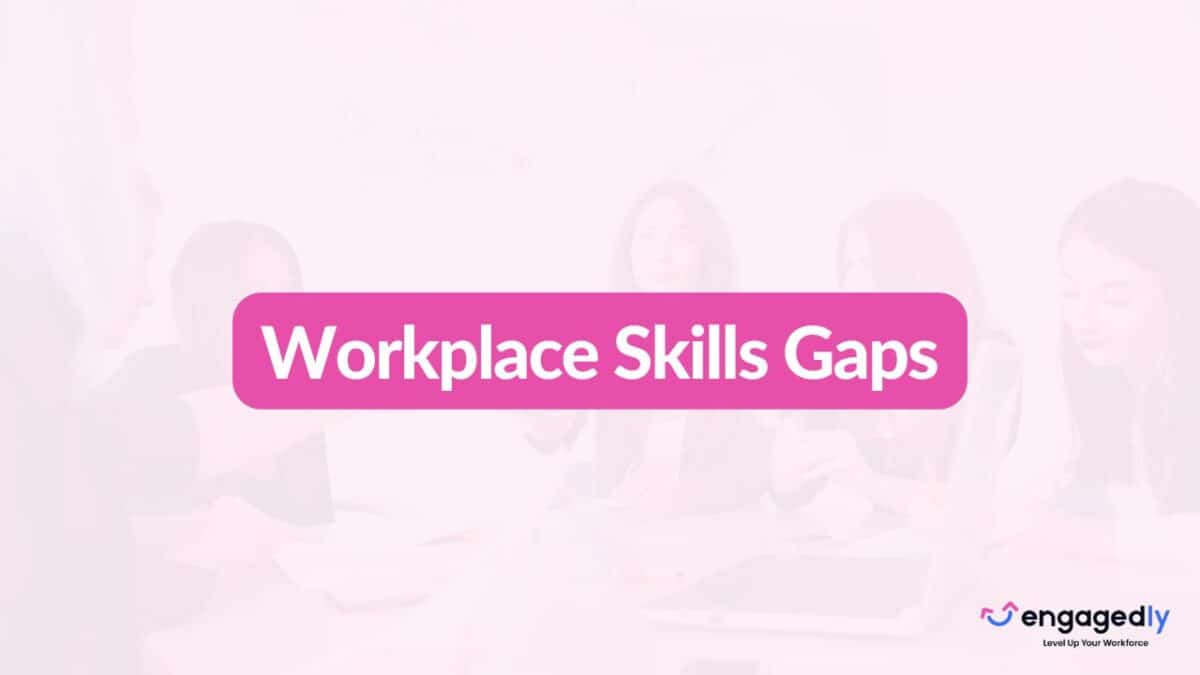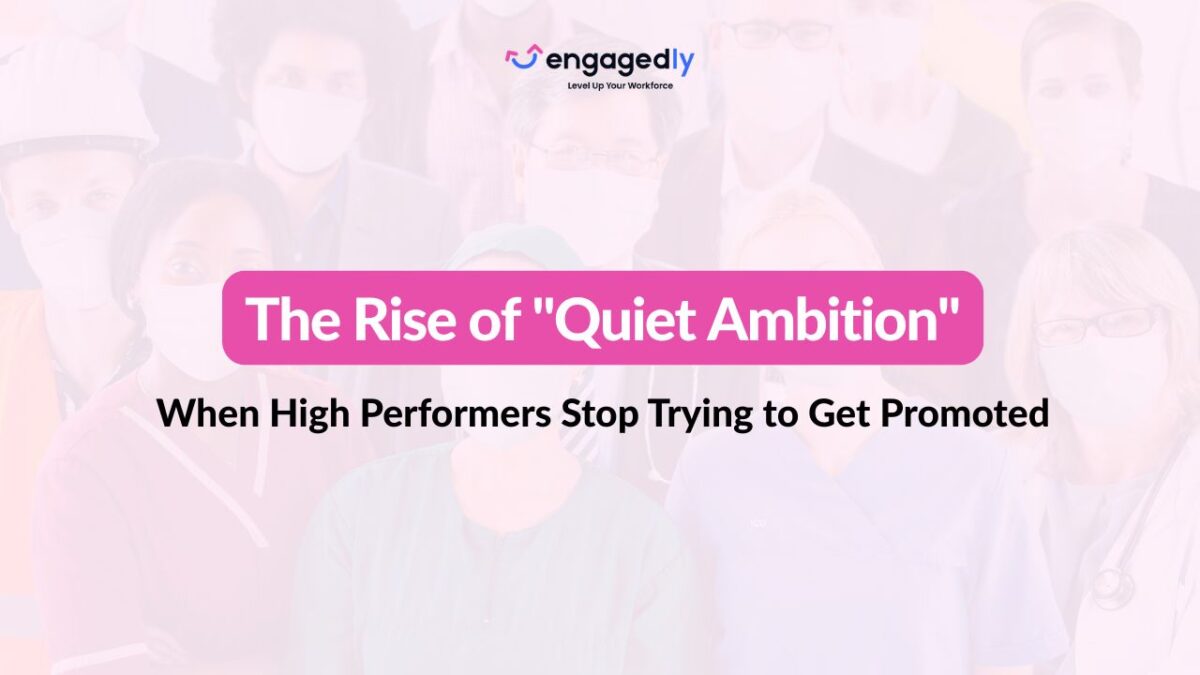Introduction
Workplaces are evolving at lightning speed. Artificial intelligence, automation, and hybrid work models are rewriting the rules of how we operate. That pace of change makes workplace skills gaps not just possible, but inevitable. The capabilities your team had last year might not be the ones they need today—or tomorrow.
Think of it like navigation: relying on an outdated GPS will only get you lost. You need a real-time system that updates as conditions change. Similarly, your talent strategy needs live guidance to keep employees aligned with business priorities.
The good news? Closing skills gaps isn’t about scrambling in panic. With the right approach, you can proactively identify gaps, create learning opportunities, and prepare your workforce for whatever comes next. In this guide, we’ll walk you through eight practical steps to close workplace skills gaps—and build a future-ready organization.
1. Revisit Your Organizational Strategy
Before diving into surveys and training programs, start with the big picture. Ask yourself: Where is the organization headed? Because if you don’t know your destination, you can’t map the skills needed to get there.
Here are a few quick tactics to reconnect with strategy:
Even if you’ve worked in the company for years, remember—strategies evolve, markets shift, and new opportunities appear. No one’s psychic, so this simple refresh ensures you’re planning for the skills of tomorrow, not yesterday.
2. Define the Skills You REALLY Need
Once strategy is clear, it’s time to translate it into skills. A handy framework to use is KSA: Knowledge, Skills, and Abilities.
- Knowledge = What employees know (theory, concepts, facts).
- Skills = What employees can do (technical or soft skills in action).
- Abilities = How employees apply knowledge and skills in real situations.
For example:
- A junior designer might know what Kubernetes is (knowledge).
- They might practice basic deployments in a sandbox (skill).
- But the ability to troubleshoot live system issues under pressure? That’s a higher-level ability.
By breaking down future needs into KSA, you can pinpoint the exact capabilities that will move the needle. This step also prevents over-generalization—because “we need people who understand AI” is too broad, but “we need analysts who can apply AI models to financial forecasting” is precise.
3. Audit Existing Capabilities
Now that you know what skills the future requires, it’s time to map what you already have. Think of this as taking inventory—not to judge, but to get clarity.
Here’s how to run a friendly, non-threatening audit:
- Skill inventory tools: Use digital platforms that let employees self-rate their skills.
- Self-assessments: Quick surveys where employees score themselves on a 1–10 confidence scale.
- Manager check-ins: Encourage managers to validate skills during regular conversations.
Pro tip: Frame this as an optional superpower reveal, not a performance review. Employees are much more likely to be honest if they know the purpose is growth, not grading.
4. Analyze the Gap—Quantify What’s Missing
Once you’ve collected the data, the next step is comparing current capabilities with what’s needed. This is where a skills matrix becomes your best friend.
A skills matrix is essentially a grid showing:
- Required skills for each role or project
- Current proficiency levels (based on your audit)
- Desired proficiency levels
Example:
- Data analytics: Team average = 6/10 → Desired = 8/10
- Public speaking: Team average = 4/10 → Desired = 7/10
- AI model building: Team average = 2/10 → Desired = 6/10
This helps you see where the biggest gaps are and prioritize. And remember—scoring a 6/10 doesn’t mean crisis. It just means opportunity for growth.
5. Build a Strategic Upskilling Plan
Here’s where most organizations stop at “let’s add some courses.” But closing workplace skills gaps requires a deliberate, structured plan.
Here’s a roadmap to make it strategic:
- Prioritize by impact: Start with the skills most directly tied to business ROI.
- Set SMART goals: (Specific, Measurable, Achievable, Relevant, Time-bound). For example: “Increase team’s data literacy from 6/10 to 8/10 in six months.”
- Mix learning methods: Blend microlearning, peer coaching, stretch projects, and formal courses.
- Leverage technology: Platforms like Engagedly allow you to build learning paths, deliver quizzes, track progress, and align learning with goals.
The goal is to make learning continuous and integrated—not just a checkbox exercise.
6. Roll Out the Plan (Smartly)
The best strategy fails if execution feels clunky. Rolling out an upskilling plan isn’t about sending a single email with a course link—it’s about building momentum.
Here’s how to make it land:
- Launch with intention: Announce the initiative with a kickoff event or town hall.
- Communicate clearly: Explain why the skills matter, not just what employees need to do.
- Secure manager sponsorship: Employees engage more when they see leaders modeling the behavior.
- Treat it like a mini-campaign: Use reminders, success stories, and recognition to keep it visible.
Think of it as a cultural movement, not just a training program.
7. Measure Progress (and Adjust)—Make It Iterative
Upskilling is not a “set it and forget it” process. You’ll need to track, measure, and tweak.
Ways to measure progress:
- Completion rates (are employees finishing learning paths?)
- Competency increases (are confidence ratings improving from 6/10 to 8/10?)
- Performance improvements (are new skills showing up in work quality and results?)
If something isn’t landing, don’t panic. Pivot.
Maybe employees ignore long e-learning modules—try video shorts or quick chat-based quizzes instead. Think of it like adjusting recipes: the ingredients stay the same, but the preparation changes.
8. Institutionalize Continuous Learning
Closing skills gaps once is good. Creating a system where gaps rarely happen? That’s game-changing.
To build a continuous learning culture:
- Run monthly micro-pulses to spot emerging needs.
- Host “skill swaps” where employees teach each other.
- Recognize and reward employees who proactively upskill.
When learning agility becomes part of your brand, employees don’t see training as a burden—they see it as a brag-worthy badge.
Quick Recap Table
Here’s your eight-step roadmap at a glance:
- Revisit your organizational strategy
- Define the skills you really need
- Audit existing capabilities
- Analyze the gap—quantify what’s missing
- Build a strategic upskilling plan
- Roll out the plan (smartly)
- Measure progress and adjust
- Institutionalize continuous learning
Why This Matters for Engagedly Users
Engagedly makes closing skills gaps not just possible—but practical and measurable. Instead of juggling multiple tools, you can bring everything into one integrated platform. Our skills assessments and pulse surveys help you capture real-time insights into employee capabilities. From there, managers can design customized learning paths that target the highest-priority gaps, track progress through manager dashboards, and connect learning outcomes directly to business goals.
And it doesn’t stop with learning. Our gamified recognition system ensures employees stay motivated and rewarded for upskilling efforts. Imagine employees not only completing training but also earning recognition badges, leaderboard points, and peer appreciation along the way. That’s how you turn learning into a culture, not a checkbox.
In short, Engagedly empowers you to move from simply identifying skills gaps to One of our global retail clients faced a significant digital skills gap as they scaled their e-commerce presence. Traditional training approaches weren’t cutting it—employees felt overwhelmed, managers couldn’t track progress, and adoption lagged.
By implementing Engagedly’s framework, the organization built role-specific learning paths tailored to digital tools and customer engagement strategies. Managers used real-time dashboards to track progress and coached employees through weekly check-ins. Within just six months, the company achieved a 30% increase in cross-skill coverage across critical roles.
The results spoke volumes:
- Employees reported higher confidence in using new technology.
- Managers observed measurable improvements in productivity and agility.
- The business adapted more quickly to market changes, giving them a competitive edge.
This case shows that closing skills gaps isn’t theoretical—it delivers tangible business results when powered by the right platform.
Final Thoughts
Closing workplace skills gaps is no longer optional—it’s a strategic necessity. Organizations that wait until gaps become critical risk falling behind, while those that take proactive steps create workforces that are adaptable, confident, and future-ready.
With the right strategy, tools, and mindset, skills development becomes part of your company’s DNA. Engagedly gives you everything you need to transform this vision into action: data-driven insights, personalized learning, manager enablement, and motivation baked into every step.
So, where will you start today?
Ready to See It in Action?
Discover how Engagedly can help you identify, close, and prevent workplace skills gaps with ease.
👉 Book a Free Demo Today and future-proof your workforce.
Author
Srikant Chellappa
CEO & Co-Founder of Engagedly
Srikant Chellappa is the Co-Founder and CEO at Engagedly and is a passionate entrepreneur and people leader. He is an author, producer/director of 6 feature films, a music album with his band Manchester Underground, and is the host of The People Strategy Leaders Podcast.






